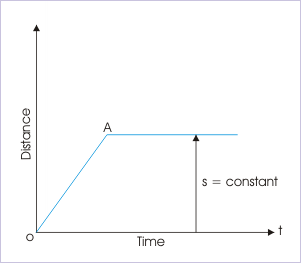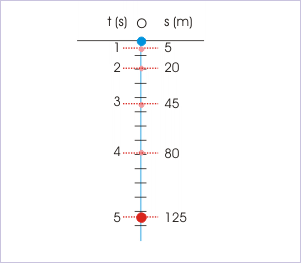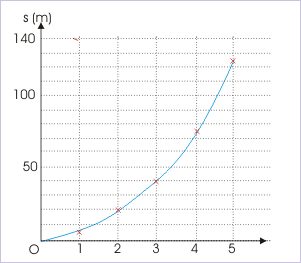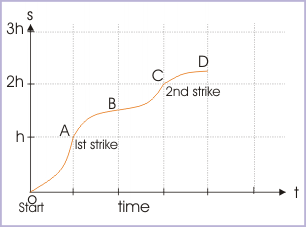| << Chapter < Page | Chapter >> Page > |
The nature of "distance – time" plot, with reference to its characteristics, is summarized here :
Distance - time plot

One important implication of the positive slope of the "distance - time" plot is that the curve never drops below a level at any moment of time. Besides, it must be noted that "distance - time" plot is handy in determining "instantaneous speed", but we choose to conclude the discussion of "distance - time" plot as these aspects are separately covered in subsequent module.
Question : A ball falling from an height ‘h’ strikes the ground. The distance covered during the fall at the end of each second is shown in the figure for the first 5 seconds. Draw distance – time plot for the motion during this period. Also, discuss the nature of the curve.
Motion of a falling ball

Solution : We have experienced that a free falling object falls with increasing speed under the influence of gravity. The distance covered in successive time intervals increases with time. The magnitudes of distance covered in successive seconds given in the plot illustrate this point. In the plot between distance and time as shown, the origin of the reference (coordinate system) is chosen to coincide with initial point of the motion.
Distance – time plot

From the plot, it is clear that the ball covers more distance as it nears the ground. The "distance- time" curve during fall is, thus, flatter near start point and steeper near earth surface. Can you guess the nature of plot when a ball is thrown up against gravity?
A ball falling from an height ‘h’ strikes a hard horizontal surface with increasing speed. On each rebound, the height reached by the ball is half of the height it fell from. Draw "distance – time" plot for the motion covering two consecutive strikes, emphasizing the nature of curve (ignore actual calculation). Also determine the total distance covered during the motion.
Here we first estimate the manner in which distance is covered under gravity as the ball falls or rises.
The distance- time curve during fall is flatter near start point and steeper near earth surface. On the other hand, we can estimate that the distance- time curve, during rise, is steeper near the earth surface (covers more distance due to greater speed) and flatter as it reaches the maximum height, when speed of the ball becomes zero.
The "distance – time" plot of the motion of the ball, showing the nature of curve during motion, is :
Distance – time plot

The origin of plot (O) coincides with the initial position of the ball (t = 0). Before striking the surface for the first time (A), it travels a distance of ‘h’. On rebound, it rises to a height of ‘h/2’ (B on plot). Total distance is ‘h + h/2 = 3h/2’. Again falling from a height of ‘h/2’, it strikes the surface, covering a distance of ‘h/2’. The total distance from the start to the second strike (C on plot) is ‘3h/2 + h/2 = 2h’.

Notification Switch
Would you like to follow the 'Physics for k-12' conversation and receive update notifications?